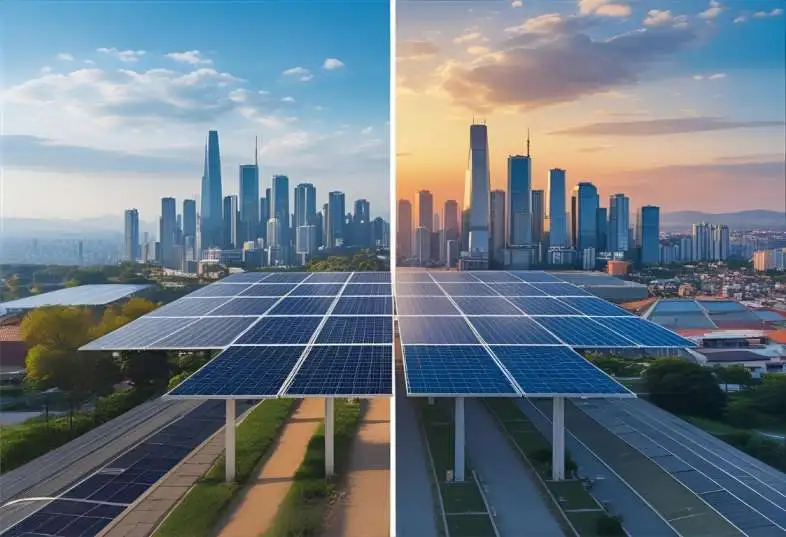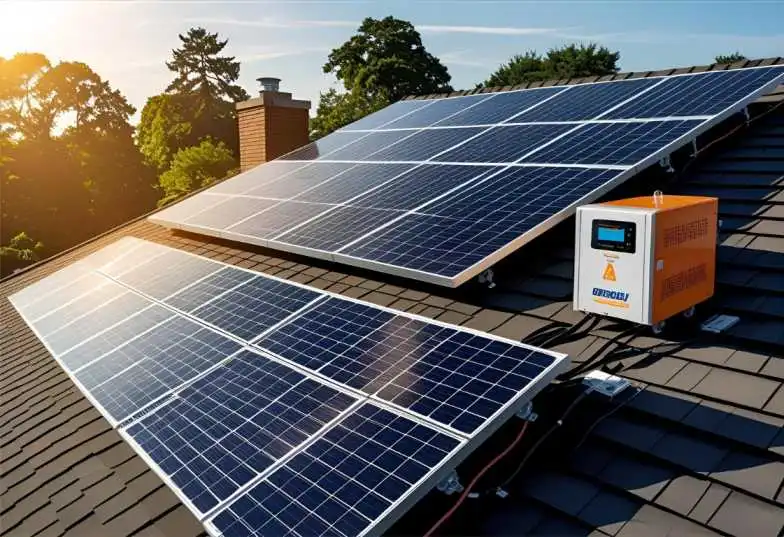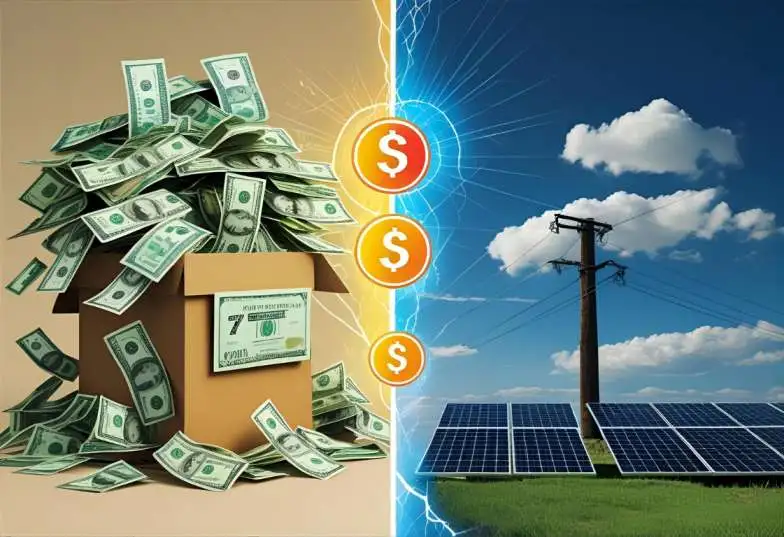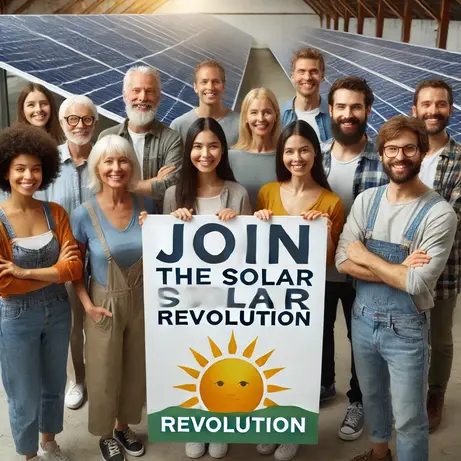Introduction
The Solar Energy World represents a powerful transformation in how we produce and consume electricity. As communities around the globe confront rising energy demands, climate change, and the need for sustainable solutions, solar power has emerged as a clean, renewable, and increasingly affordable alternative to fossil fuels.
From cutting-edge photovoltaic technologies to innovative storage systems, solar energy is reshaping industries, creating new economic opportunities, and empowering individuals to take control of their energy future. Whether you’re a homeowner exploring rooftop panels or a policymaker working to expand access to renewable power, understanding the potential of solar energy is essential.
In this guide, we’ll explore why solar energy matters, how it works, and what role it plays in building a cleaner, more resilient world.
Table of Contents
Why Solar Energy World Matters
The transition to solar energy is fueled by several key benefits:
Technological Advancements
Innovations in solar panels, battery storage, and smart grids are making solar power more efficient, cost-effective, and widely accessible.
Environmental Impact
Solar energy significantly reduces carbon emissions, helping combat climate change and protect natural ecosystems.

Economic Growth
The solar industry is a major driver of job creation, local economic growth, and global investment in clean energy.
According to the International Energy Agency (IEA), global solar capacity grew by approximately 29% in 2023, surpassing previous estimates.
International Energy Agency (IEA) Solar Report
How Solar Energy Works
The process of solar power generation is both simple and revolutionary:

- Solar Panels – Absorb sunlight and convert it into electricity using photovoltaic (PV) cells.
- Inverters – Convert direct current (DC) into alternating current (AC) to power homes and businesses.
- Battery Storage – Stores excess energy for use during nighttime or cloudy days, ensuring a stable power supply.
- Grid Integration – Enables surplus energy to be fed into the grid, reducing dependence on fossil fuels.
- National Renewable Energy Laboratory (NREL) Explanation of Photovoltaic (PV) Cells
Did You Know? The World Economic Forum predicts that by 2050, solar energy could supply 50% of global electricity needs.
Why the World is Switching to Solar Energy
- Lower Energy Costs – Solar power reduces electricity bills and stabilizes energy prices.
- Environmental Sustainability – 100% renewable, solar energy prevents over 3,000 pounds of CO₂ emissions per home annually (NRDC).
- Energy Independence – Countries investing in solar reduce reliance on imported fossil fuels, strengthening energy security.
- Job Creation & Economic Benefits – Over 250,000 people work in the U.S. solar industry alone (SEIA).
Real-Life Success Story: A Solar-Powered Village in India
Dharnai, Bihar – India’s First Fully Solar-Powered Village
In the heart of Bihar lies Dharnai, a small village that made history by becoming India’s first fully solar-powered village. For decades, the residents of Dharnai lived without reliable electricity. But in 2015, with support from Greenpeace India, the village was transformed through a community-based solar microgrid system.
Key Highlights:
- Over 2,400 residents now have access to 24/7 electricity.
- The system powers street lights, schools, water pumps, and 60+ homes.
- The project helped reduce reliance on kerosene lamps, improving air quality and health.
- Women and children report feeling safer due to better lighting and access to basic appliances.
Why It Matters:
Dharnai’s success shows that solar energy isn’t just for the wealthy or urban—it can empower rural communities, improve education, enhance livelihoods, and close the energy access gap.
“Earlier, we used to wait hours just to charge a mobile phone. Now, our children can study at night,” says Rekha Devi, a Dharnai resident.
🔗Learn more about Dharnai’s solar transformation
Solar Energy Industries Association (SEIA) Report
Global Leaders in the Solar Energy World
Leading Nations in Solar Energy
- 🌍 China – The world’s top producer of solar panels and a leader in large-scale solar adoption.
- 🇩🇪 Germany – A pioneer in residential solar incentives and energy efficiency policies.
- 🇺🇸 United States – Rapidly expanding solar infrastructure and large-scale investments.
Emerging Solar Leaders

- 🇮🇳 India – Large-scale solar projects, rural electrification programs, and initiatives like Solar Mamas are accelerating solar adoption.
- 🇦🇺 Australia – Leading in per capita solar capacity, thanks to abundant sunlight and supportive policies.
- 🌍 African Nations – Countries like South Africa are experiencing a surge in decentralized solar energy solutions, addressing energy access gaps.
United Nations Sustainable Energy for All Initiative
Challenges in the Solar Energy World & Solutions
🔹 High Initial Costs – Government incentives and tax credits, such as the U.S. federal tax credit covering 30% of installation costs, make solar more affordable. U.S. Federal Solar Tax Credit (Energy.gov)

🔹 Intermittency Issues – Advanced battery storage and hybrid solar-wind systems enhance reliability.
🔹 Infrastructure & Policy Barriers – Global investments and international agreements are accelerating clean energy transitions.
How You Can Be Part of the Solar Energy World
- Install Solar Panels – Reduce energy costs and lower your carbon footprint.
- Advocate for Clean Energy – Support policies that promote solar power adoption. United Nations Climate Action Resources
- Use Solar-Powered Products – Choose solar-powered gadgets like chargers, lights, and water heaters.
- Educate & Spread Awareness – Share the benefits of solar energy with your community.
Pro Tip: Check for available solar incentives in your country to save on installation costs!
The Future of the Solar Energy World
With continued advancements in solar panel efficiency, energy storage, and smart grids, solar energy is on track to become the most affordable electricity source worldwide by 2030.
Ready to get started? Check available rebates in your area or schedule a consultation with a trusted solar provider. Every step you take moves us closer to a cleaner, more resilient energy future.

How will you contribute to the solar energy revolution? Let us know in the comments or subscribe for the latest updates!
Frequently Asked Questions (FAQs)
Q1. Is solar energy cheaper than traditional electricity?
Yes. Over time, solar energy usually costs less than buying power from the grid. While installation can be expensive upfront, incentives and falling equipment prices often make solar the most affordable option over 20–25 years.
Q2. How long does it take to recover the cost of installing solar panels?
The “payback period” varies by location, incentives, and energy usage, but in many regions, homeowners recover their investment in 5–8 years.
Q3. Do solar panels work during cloudy weather or rain?
Yes. Solar panels still generate electricity on cloudy days, though efficiency drops by about 10–25% depending on cloud density. Panels also work in cooler weather.
Q4. Can I completely go off-grid with solar energy?
You can, but you’ll need:
Battery storage systems to keep electricity for nights and cloudy days,
Larger systems to cover your total power usage,
Backup generators in some cases.
Most homeowners choose grid-tied systems for reliability and the option to sell excess energy.
Q5. What maintenance do solar panels require?
Very little. Typically, you’ll need to:
Rinse panels a few times a year to remove dust or debris. Schedule a professional inspection every 2–3 years.
Most panels have 25-year warranties and last even longer.
Q6. Can solar panels damage my roof?
No—if installed correctly. Panels can help protect your roof from rain and sun exposure. Make sure you work with licensed, experienced installers.
Q7. Are there government incentives for solar energy?
Yes! Many governments offer tax credits, rebates, and grants to make solar energy more accessible. For instance, the U.S. federal solar tax credit covers 30% of installation costs (Energy.gov).
Q8. What happens to solar panels at the end of their life?
Solar panels can be recycled. Many manufacturers and recycling programs reclaim valuable materials like silicon, glass, and metals.
About the Author
Soumen Chakraborty is a sustainability advocate and writer with a passion for renewable energy and environmental education. With years of experience researching clean energy technologies and promoting eco-friendly living, Soumen helps readers understand the benefits of solar power and practical steps to reduce their carbon footprint. When not writing, he enjoys exploring innovative solutions that make sustainable living accessible to communities around the world.
Last update on 05 July 2025
Final Thoughts
The Solar Energy World is more than a concept—it’s a movement shaping the future of global energy. With increasing affordability, technological advancements, and strong environmental benefits, now is the best time to embrace solar power.
Ready to make the switch? Research your options, explore incentives, and join the growing community of solar adopters. Solar energy isn’t just a trend—it’s a practical, proven solution that’s already changing lives around the world. Whether you’re looking to lower your electricity bills, reduce your carbon footprint, or support your community’s clean energy goals, now is the perfect time to explore your options. Start by researching local incentives, talking to certified solar installers, and learning how solar can fit into your home or business.

